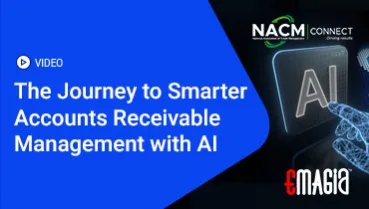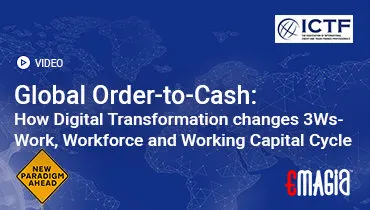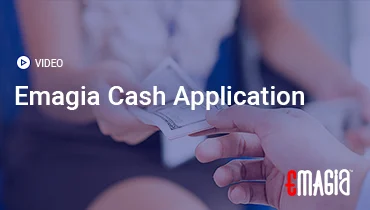In today’s fast-paced business world, managing finances efficiently is not just a good idea—it’s essential for survival and growth. One of the most critical, yet often overlooked, areas is the invoicing procedure. Far too many businesses are stuck with manual, time-consuming methods that lead to costly errors and delayed payments. This detailed guide is for business owners, finance managers, and accounting professionals who are ready to transform their operations.
We’ll walk you through the journey from traditional, cumbersome methods to a modern, automated approach. By leveraging the right tools, you can not only simplify the processing of invoices but also unlock new levels of financial clarity, improve cash flow, and strengthen customer relationships.
The Costly Burden of Manual Processing Invoices
Manual handling of financial documents is fraught with challenges. The process of invoicing often involves tedious data entry, endless paper trails, and a high risk of human error. Each mistake can lead to a cascade of problems, from customer disputes to significant delays in cash collection. This section explores why the old way is no longer sustainable.
The Hidden Costs of Manual Invoice Processing
It’s not just the salary of the person processing an invoice. There are costs associated with printing, mailing, and storing physical documents. The time spent manually entering data is time not spent on more strategic tasks. Furthermore, the risk of data entry errors can lead to serious financial reconciliation issues down the line.
Common Delays in the Invoice Payment Process
A major bottleneck for many companies is the slow turnaround from creating to sending an invoice. Manual systems delay the entire invoice to pay process, directly impacting your cash flow. Without an automated invoice workflow, tracking and following up on late payments becomes a cumbersome chore, which can lead to a strained client relationship.
From Vendor to Sales: Understanding Key Invoicing Processes
A well-defined process is the backbone of any healthy financial department. This section lays out the fundamental components of a modern invoicing system, detailing the various steps and stakeholders involved, from the moment a sale is made to the final payment being recorded. We will also touch on the different types of invoices, including sales invoices and their relationship to vendor invoice processing.
The Invoice Approval Process: A Critical Step
Before a payment is made, an invoice must often go through a chain of approvals. A manual invoice approval process is slow and opaque, making it difficult to pinpoint where a delay has occurred. A streamlined invoice process automates this, ensuring that approvals are routed correctly and efficiently.
Key Features to Look for in Invoice Processing Software
Modern accounting software offers a suite of features that can completely transform how you handle receivables and payables. Choosing the right platform is about more than just automating a single task; it’s about creating an integrated, intelligent system that works for you. This section details the must-have functionalities that can revolutionize your financial operations, from invoice and payment processing to comprehensive reporting.
Automated Invoice Generation and Delivery
Imagine generating and sending professional, error-free invoices with a single click. A robust system handles the creation of sales invoices and even automates the delivery, whether through email or a secure client portal. This feature alone drastically reduces the time and effort involved in the initial invoice raising process.
Seamless Payment Integration and Tracking
The best software makes it easy for your customers to pay you. Look for platforms that integrate with multiple payment gateways. This simplifies the invoice payment procedure for your clients and gives you real-time visibility into your receivables. The system should automatically record and reconcile payments, so you always know the exact status of every invoice payment processing.
The Role of Automation in Accounts Payable Invoice Processing
A truly integrated solution doesn’t just manage your accounts receivable; it also simplifies accounts payable invoice processing. By automating the capture and routing of supplier invoice processing, you can pay your vendors on time, strengthen your relationships, and gain greater control over your cash outflow.
How Emagia Helps Streamline the Invoicing Process
Emagia’s innovative solutions are specifically designed to address the complexities of financial management. Their platform, powered by AI and machine learning, automates the entire order-to-cash process, from generating invoices to applying cash and managing collections. By leveraging Emagia’s technology, businesses can achieve a truly touchless invoice processing experience, minimizing manual intervention and maximizing efficiency. The software offers powerful analytics and predictive insights, giving you the tools you need to make data-driven decisions and optimize your cash flow like never before.
FAQs about Invoice Processing and Automation
What is the process of invoicing?
The invoicing process is the series of steps a business takes to request payment from a customer for goods or services. It begins with creating the invoice and ends with the payment being recorded and reconciled in the accounting system.
What is invoice processing in accounts payable?
Invoice processing in accounts payable involves managing incoming vendor bills. This includes receiving, verifying, and approving invoices, and then scheduling and executing payment to the vendor. A good system streamlines this so you can efficiently process invoice for payment.
How to process invoices for a small business?
For a small business, the best way to handle processing invoices is to adopt an accounting software solution that offers automation. This allows you to centralize your financial data, generate invoices quickly, and send automated reminders, freeing you up to focus on growing your business.
What is the difference between an invoice and a bill?
While often used interchangeably, the term “invoice” is typically used by the party requesting payment (the seller), while “bill” is used by the party receiving it (the buyer). Essentially, they are two sides of the same financial document.
How do invoices work?
An invoice is a commercial document that itemizes a transaction and provides the terms of payment. It serves as a legal record and helps both the seller and the buyer track payments. It is created after a sale but before a payment is received.
What is an invoice processing workflow?
An invoice processing workflow is a defined sequence of tasks that an invoice must go through from the moment it is received until it is paid and reconciled. This can include steps like data entry, matching with purchase orders, approval, and payment. Automation makes this workflow faster and more accurate.
What is a processed invoice?
A processed invoice is an invoice that has been fully handled and accounted for in a company’s system. It means the invoice has been approved and paid, and the transaction has been recorded in the general ledger. It is no longer an outstanding payment request.
What are the benefits of touchless invoice processing?
Touchless invoice processing uses AI and automation to handle every step without human intervention. The benefits include drastically reduced processing times, fewer errors, lower operational costs, and improved financial visibility. It represents the pinnacle of efficiency in financial operations.



